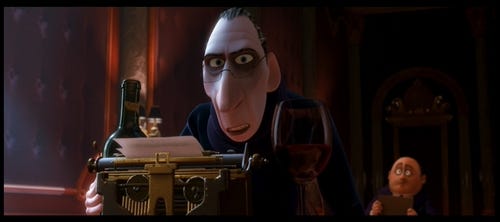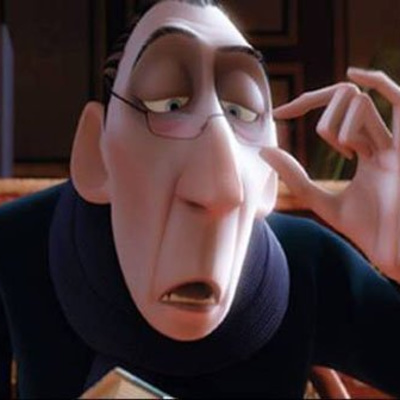By Rahul Desai
Martin Scorsese’s latest is an unsparing 206-minute epic about greedy white men plundering an oil-rich land and murdering its natives while posing as saviours. It is, of course, a historical film based in 1920s Oklahoma; Killers of the Flowers Moon is adapted from David Grann’s 2017 non-fiction book of the same name. The setting is Osage Nation, where Native Indian families who retain the mineral rights on their reservation start to die of a “wasting sickness”. The specifics revolve around a former World War I soldier named Ernest Burkhart (Leonardo DiCaprio), a man who marries into a rich Osage family to further his uncle’s ploy of infiltrating the tribe to inherit their oil headrights. His wife, Mollie Kyle (Lily Gladstone), begins to grow weak from suspected diabetes; her sisters perish under strange circumstances. One is shot dead, another is killed in an explosion, another is consumed by an unnamed illness. The Osage members do not suspect that Ernest’s uncle – an Osage benefactor named William King Hale (Robert De Niro) – is the ‘kingpin’ of this slow-burning demolition job in the wilder West.
Hale, the deputy sheriff, is the architect of a conspiracy that speaks to the broader complicity of the outside world. Read the first line again, and the story is timeless for how it lays bare a naked Americanism – the genocidal foundation pillars of white privilege, its mid-century girth, its Middle-Eastern sequels, its present continuity – in all its deflected capitalism. Martin Scorsese chooses to convey not a snapshot but an entire portrait in scale. It’s a remarkable and inescapable effort: The narrative doubles up as an admission that, no matter what Scorsese himself symbolizes as an American storyteller, his legend pales in comparison to the story of America. If we watch all his movies back to back, we might come away with the complicated morality of oppression, which in turn implies the invisibilization of the oppressed; we see the doers because history is manipulated by them. But Killers of the Flower Moon is definitive proof that fiction remains in service of a reality that’s bigger than his chronicling of it. The doers are, for once, nothing without the dignity of the undone.
For instance, the Ernest-and-Uncle schemings dominate the film in terms of screen-time – they represent a very Scorsesian exploration of semi-organized crime, guilt, violence and death. These are men trying to wipe out an entire people and grab their cash, except they’re not very good at being cold-blooded or subtle. They’re like mobsters burdened with the pretense of playing humans. There are errors, miscommunications, bad ideas, gore and punishments (in the film’s funniest scene, the older man brutally paddles his nephew for screwing up). Even when the Federal Bureau sends their best detective to investigate, the courtroom portions feature the messy awakening of Ernest’s conscience. It’s familiar territory.
But the reason Lily Gladstone’s performance is so beguiling is because the actress single-handedly manifests the ‘other’ side of a Scorsese duel. Their chaos is nothing without her calm. It almost feels like she is challenging the director to break the pattern and subvert the sins of his aesthetic. She doesn’t say a lot, which leads her oppressor to fill in the blanks with his own tortured noise. This is entirely by design. When Mollie is on screen, the crippling innocence of Osage morphs into a sense of trust and grace. Gladstone’s face alone evokes the character of a tribespeople that crave for belonging rather than status, for co-existence rather than power. The way she looks at Ernest suggests that perhaps he, among all the vultures, is the only one capable of reflecting. Or, at best, reforming. It’s in his name, too. She knows that Ernest has married her for money. The arrangement is obvious. But Mollie isn’t in it to buy her way into the books of the White West. She isn’t in denial about his intentions. She even jokes about his put-on charm, only to allow herself to be seduced by it. At some level, she believes that her bravery might renovate their marriage into an interfaith romance – rich-meets-poor, good-rescues-bad, love-fixes-greed – the kind that she hopes will become a torchbearer for mixed-race peace in future textbooks. She jumps into the cage to tame and be mauled at once.
Just as Ernest poisons her insulin at the behest of his uncle, the silence of her suffering un-poisons his heart. She is defined by a willingness to accept, endure and wait for his truth: It’s a love story that’s waiting to transcend its own aspirations. The most moving moment of the film is centered on a question she asks him. They both know the answer. But she wants to hear it from his mouth. It’s an achingly personal moment, but the stakes feel far higher than that. Scorsese stages it in a way that makes it seem as though his answer holds within it the destiny of America. She looks at him with pain but also hope, disappointment but also last-ditch tenderness. If he is honest, there is a chance of moving forward; if he is not, there is the tragedy of not looking back.
It brings to mind the equation between the Matt Damon and Vera Farmiga characters in The Departed; only here, the woman is subliminally aware of his deceit all along. The natives are subconsciously aware of their own wounds. Leonardo DiCaprio pulls on all his years of playing men haunted by their own humanity. Ernest’s default nature is obligation – to the uncle that rescued him from anonymity, to the wife that changes his perception of that anonymity. His mental turmoil is palpable, but like the film itself, it strives to get defeated by the faith of his full-blood and full-souled wife.
The screenplay resists the framing of this story as a mysterious whodunit. The identity of the oppressors is not used as some dramatic revelation; we see white men mugging and brutalizing the natives early on. King is shown running the show, hiring hitmen, discussing new poisons with the ‘doctors’ on his roster. There is no ambiguity about what is happening, even if there’s a narrative tension that makes every death feel like both a surprise and an inevitability. The suspense, instead, is in the emotions of the woman who is waiting to die and the man who is reluctant to kill. We don’t know why the Osage women are indulging and starting families with shady men, but we also do. We don’t know how the intellectually superior Mollie is letting the simple Ernest fool her, but we also do. In a way, her desire is so sad that it’s almost perverse (in a reverse-Phantom Thread manner). She imagines that her sickness will be what triggers his transformation; his patriarchal urge to protect her and their kids might ultimately break his uncle’s hold over him. She hopes that her fragility will summon his strength. This anti-agency shapes the anxiety of the plot – one that lingers rather than stalls, extends rather than stretches. It’s a delicate interplay of wide and narrow, political and personal, ugly and beautiful, subservience and power, terse and tragic.
Killers of the Flower Moon is also a film that is tangibly made by an 80-year-old American director, who has created long enough to turn every new story into a confession and self-reckoning. There is a deep humility embedded in this film – the humility to expand, to phrase, to retell, to wonder. It’s no coincidence that the trademark Scorsese cameo here isn’t so much a cameo as an act to challenge his own voice. It’s a framing device as well as a reminder that, at this stage, Martin Scorsese has nothing to lose except himself. He is at a point in his career where his cinema is synonymous with American history – loving the former is inextricably linked to critiquing the latter. Every other scene, then, emerges as a grammar of grief and conflict. There’s a ‘lastness’ about them, an unyielding fondness for the medium that has reframed his name as an adjective. One can sense that a scene is not unfolding but leaving. That time is not passing but finishing. There’s a serenity about the shots and staging and performances and score, unrestrained by the language of film-making but rooted in the vocabulary of living. He is almost mourning the end before it comes, and therefore acknowledging the beginning before it’s forgotten. 206 minutes sounds like a lot. But it’s really just the opening salvo in a long goodbye – one that embraces self-erasure to reveal the erased. One that rewrites the right side of history. And one that reclaims war from the legacy of the bomb.





